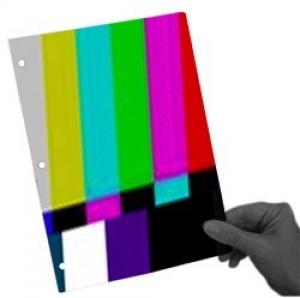Cuttlefish inspire MIT researchers to create extremely efficient reflective displays
Cuttlefish are able to change their skin color quickly. Now scientists from MIT are working to create displays that are extremely efficient - using less than one-hundredth the power of today's TVs.
Cuttlefish use chemicals to change the space between membranes on their skin. The researchers have created an artificial electrical system that controls spacing between layers in their display, thus changing the color.
The prototype display is several inches across, and only one micron thick - inside there are around 20 layers of polystrene and responsive poly-2 vinyl. The poly-2 vinyl expands as the voltage increases, becoming thicker, and reflecting longer wavelengths of light. Without electricity it is clear.
The screen can also reflect non-visible wavelengths of light, such as infrared and ultraviolet, depending on the voltage applied. It can produce images using only a few volts because it doesn't create light, it only reflects it. In a dark room with no light, the screen would remain dark.
The researchers also say that the screen is very easy to make, but have a limited viewing angle.




